Advanced materials such as the Prusament PC Blend Carbon Fiber greatly expand the possibilities of 3D printing and this is why we’re bringing another new material to the market: Prusament PA11 Carbon Fiber Black, a material perfectly suited for use in the automotive industry, but also great for printing durable mechanical parts at home – components for drones and other RC models, gears and other technical parts.
What is PA11?
Polyamides are a group of polymeric materials produced since the 1930s when DuPont developed polyamide 6.6 known by its trade name Nylon. This name has since become widespread and is often incorrectly applied to other types of polyamides. They are referred to by numbers that represent the number of carbon atoms of the parent compounds – e.g. PA6, PA6.10, PA12, etc.
The PA11 we use is a type of polyamide used primarily for SLS technology. This is a rather unexplored area in the field of FFF 3D printing. We have experimented quite a lot in this field and finally achieved more than a good result. Why did we choose PA11? Commonly used PA6 and PA12 polyamides have a number of disadvantages: PA6 is extremely hygroscopic, making it extremely difficult to print with it even 1 day after unpacking. In some cases, PA6 can get absorb too much moisture even during long printing runs. PA12 isn’t as hygroscopic, but it warps extremely and has very poor adhesion to a standard PEI print sheet. PA11 is a good middle ground – it’s less hygroscopic and offers better adhesion to the PEI print sheet (for small and medium-sized models).
Prusament PA11 Carbon Fiber under an electron microscope
Thanks to added carbon fiber, Prusament PA11 Carbon Fiber is virtually non-warping. Compared to pure polyamide, it has slightly weaker interlayer adhesion, roughly comparable to our Prusament PC Blend Carbon Fiber – still a very good result.
Basic Mechanical and Chemical Properties
Polyamide PA11 is a material made from castor oil, the carbon fibers added to this filament are recycled, as with Prusament PC Blend Carbon Fiber. Probably the biggest advantage of this material is its high-temperature resistance, up to 190 °C depending on the load. This makes it perfectly suitable for printing special parts, such as parts of machines that emit heat (motors, etc.).
The second major advantage of PA11 (and polyamides in general) is its excellent chemical resistance to a range of solvents. PA11 has good resistance to bases (e.g. NaOH), alcohols (Methanol, Ethanol), toluene, acetone, motor oil, petrol, diesel, etc.
Prusament PA11 Carbon Fiber has good friction and abrasion resistance. This makes it suitable for printing gears and other moving parts. As for other mechanical properties (impact strength, tensile characteristics), these are similar to those of Prusament PC Blend Carbon Fiber. For a better idea, we recommend looking at our material table.
 |
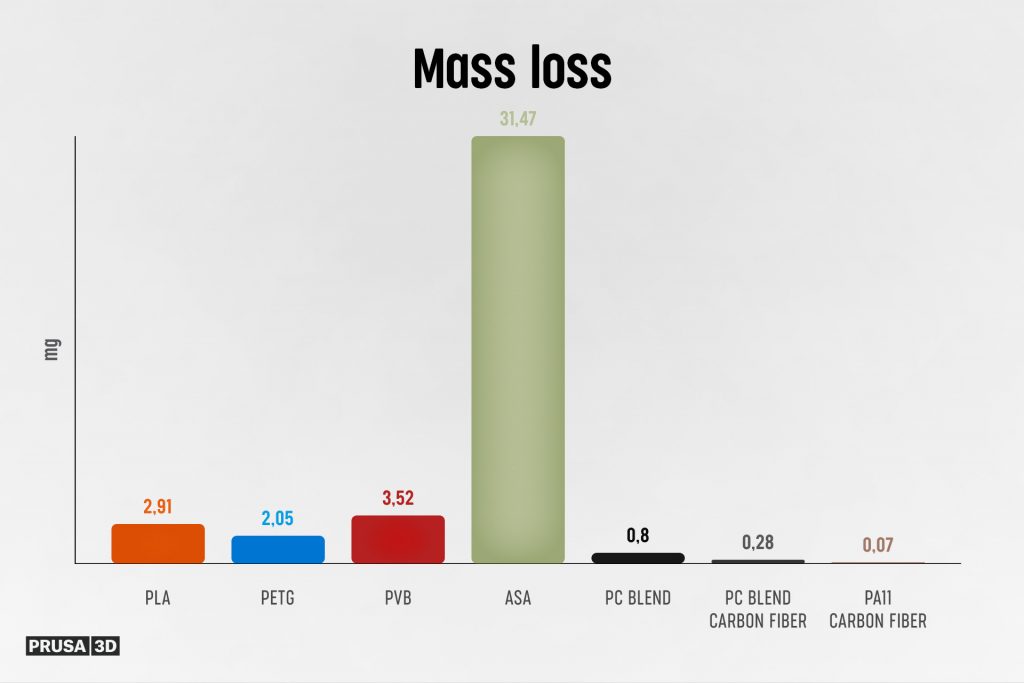 |
Comparison of Prusament tribological measurement results. Both Coefficient of friction and Mass loss was measured by moving the specimen against the steel pin.
PA11, like other polyamides, is a hygroscopic material (absorbs air moisture). If the absorbed humidity reaches high levels, the print quality will deteriorate. Deterioration occurs between a few days to a month. If you are not sure how long it has been since you opened the sealed bag or if you haven’t been printing for a long time, we recommend drying the filament at 90 °C for 4-6 hours before printing. Absorbing moisture may sometimes be noticeable through removing supports. If the filament is dry, support removal should be easy.
Pros and cons
| Pros | |
|---|---|
| Resistant to high temperatures (up to 190 °C) | |
| Excellent chemical resistance | |
| Low friction coefficient (compared to other materials) | |
| Abrasion resistance | |
| Less hygroscopic compared to other PA types | |
| Professional-looking matte surface | |
| Low shrinkage during printing | |
| Cons | |
|---|---|
| Needs to be printed on a special print sheet / use a separation layer (glue stick) | |
| It is necessary to use a hardened nozzle (or Nozzle X) | |
| Lower interlayer adhesion (compared to pure PA) | |
| Occasional drying may be required | |
| Higher cost (compared to other materials) | |
| Produces odor during printing (much less noticeable than ASA) | |
Advantages of printing on a special printing sheet
Together with Prusament PA11 Carbon Fiber Black, we are also releasing a brand new printing sheet designed specifically for printing polyamides. The reason for this is the low adhesion of PA11 to our classic PEI printing sheets. Up until now, we have recommended printing polyamides on textured or satin print sheets with a layer of adhesive (glue stick), but this has not proven to be a very suitable option. Sure, smaller models with sparse infill can be printed on PEI sheets coated with stick glue but for reliable printing of technical models, you need something better. Prusament PA11 Carbon Fiber in particular can easily peel and warp when printed on conventional sheets, despite being filled with carbon fiber. That’s why we have developed a new surface layer of a special material that provides significantly better adhesion for polyamide printing materials.
Our new PA Nylon print sheet comes with a matt texture similar to the satin print sheet. Besides polyamides, it is also compatible with PETG, printing with other materials is not recommended due to a weak adhesion. Even polyamides themselves differ in their composition and may come with various adhesion properties. Many polyamides, especially clean (without carbon fibers for example), have a strong warping tendency. That’s why some materials may require using the brim function even if they stick to the surface nicely. So far, we cannot say if any of the untested polyamides have strong or weak adhesion – that’s why we recommend printing only the polyamides mentioned in our material table. These filaments work just fine with our special PA Nylon print sheets with selected printing temperatures.
For easy print removal and a long sheet lifespan, you need to only wash it with water before every use and set the first layer height. We strongly recommend NOT washing the sheet with Acetone, IPA (isopropyl alcohol) and other alcohol-based chemicals (including window cleaner, 3DLAC, etc.). Using IPA (and other chemicals) makes the surface matt and changes the surface structure and adhesion. This leads to a shorter lifespan and a much higher risk of damaging the sheet. If you have visible grease stains (fingerprints for example), you can clean the sheet with water and dish soap. We recommend washing the sheet with dish soap before turning it on the other side.
Comparison of a clean PA Nylon printing sheet (left) with a surface treated with isopropyl alcohol (right). Note the formation of rough structures after IPA treatment. Note: Photo is for illustrative purposes only, this is a test sample. The surface of your sheet looks different under a microscope than in the photos above.
Print settings and other printer equipment
In addition to a special print sheet, printing with a hardened nozzle is required due to the highly abrasive properties of carbon fiber. We suggest using the Nozzle X for the best results.
We recommend printing on a printer in an enclosure or placing the printer in a well-ventilated room (see our material safety datasheet). Printing polyamide releases a relatively strong odor into the air and emits potentially hazardous particles (UFP – ultrafine particles). Our Original Prusa Enclosure is an ideal option. Not only will the odor be reduced, but the higher ambient temperature will improve the adhesion between printed layers. Once you finish printing in the enclosure, open the window first and then open the doors of the enclosure to quickly change the air.
Due to the high printing temperatures, we do not recommend using the Original Prusa MINI+ – the Original Prusa MK3S+ is the way to go for printing Prusament PA11 Carbon Fiber Black and the XL will also support this material.
Protip: Do you need to add the Prusament PA11 Carbon Fiber print profile into PrusaSlicer? Make sure you’re running PrusaSlicer 2.4.2 or newer. Go to Configuration – Configuration Wizard – Filaments – NYLON – Prusa Polymers – check the Prusament PA11 Carbon Fiber option and press Finish. Now, PA11 will be available in the list of materials.
Color, appearance and price
The Prusament PA11 Carbon Fiber Black is again available in black color, due to the carbon fiber content inside the filament. You may ask why did we use the different colors of the spool sides – these are grey to distinguish glued spools from folded ones. When the filament dries (90°C), the spool sides expand thermally and when cooled, the spool may fall apart. For this reason, we had to glue the paper and plastic parts together. You can still recycle the paper and plastic in the same way as with regular spools, you just have to exert a little more force to disassemble the spool.
The spools hold 800 g of material. The price of one spool is 99.99 USD / 99.99 EUR (VAT incl.) and the special PA (Nylon) sheet will cost you 44.99 USD / 44.99 EUR (VAT incl.). Or you can buy the whole bundle, which costs 129.99 USD / 129.99 EUR (VAT incl.).
Typical applications for Prusament PA11 Carbon Fiber
Do you like our new Prusament? Let us know in the comments what you think!
Happy printing!






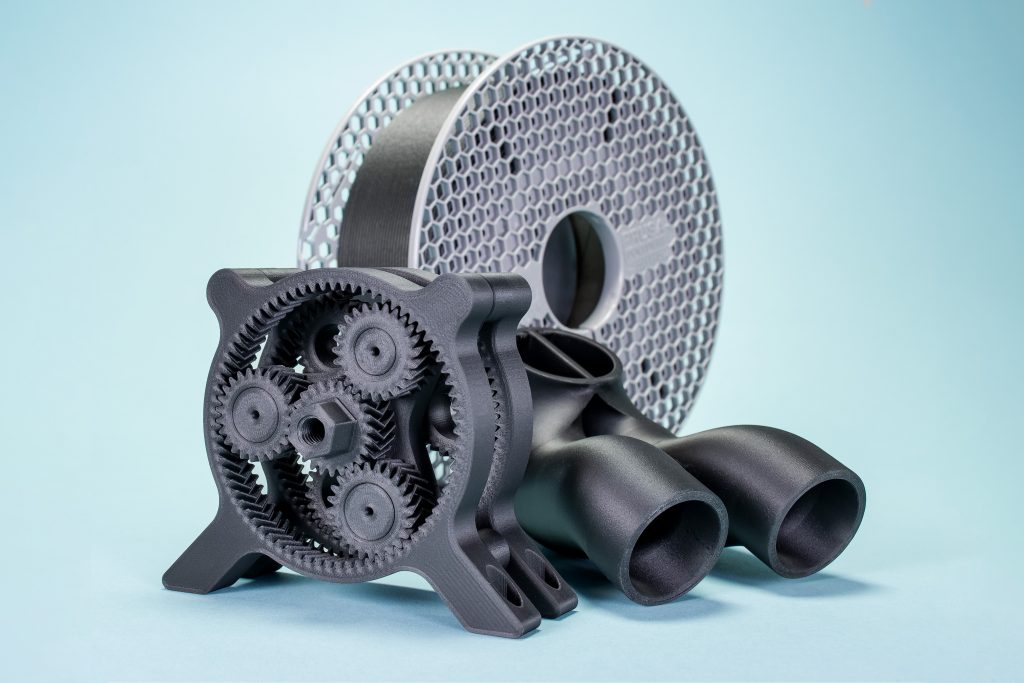
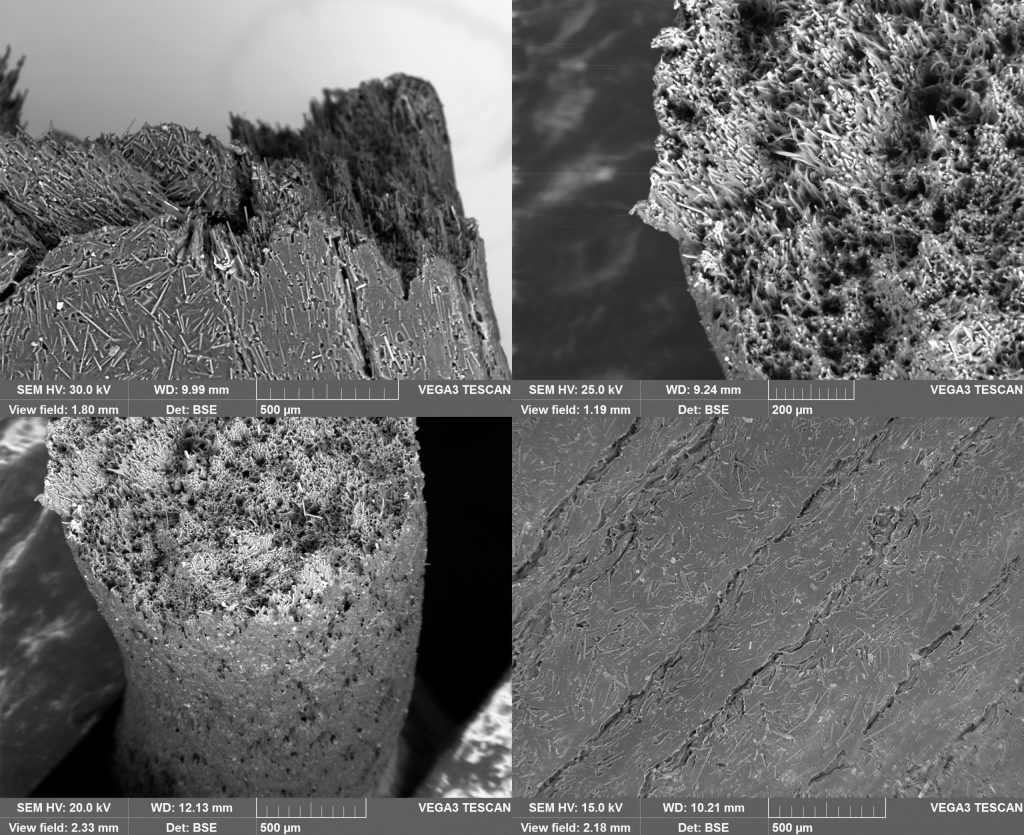
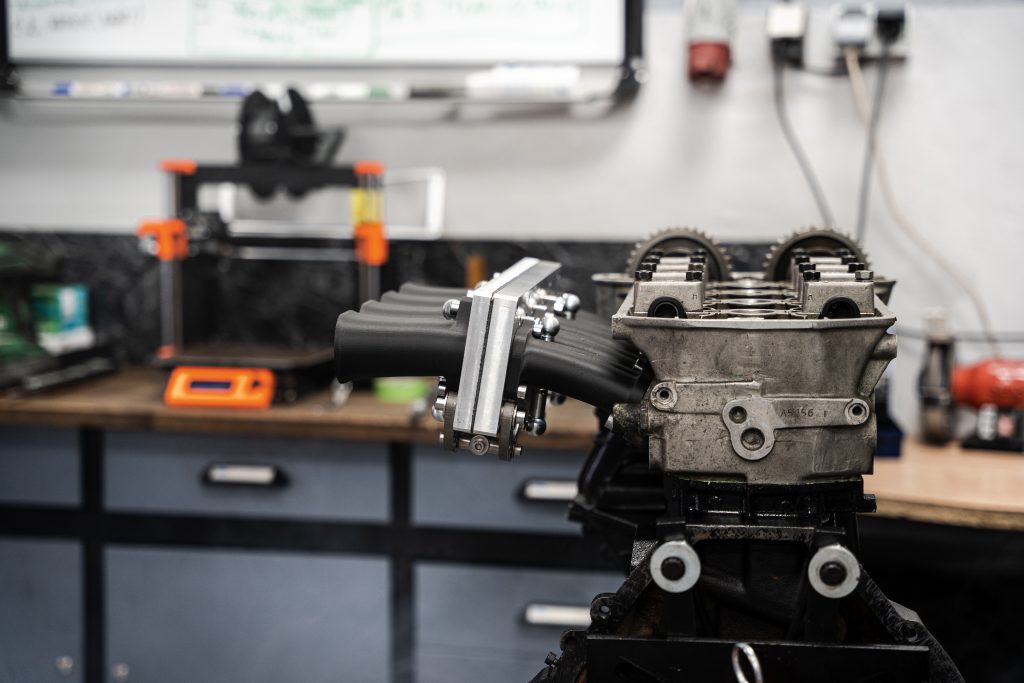
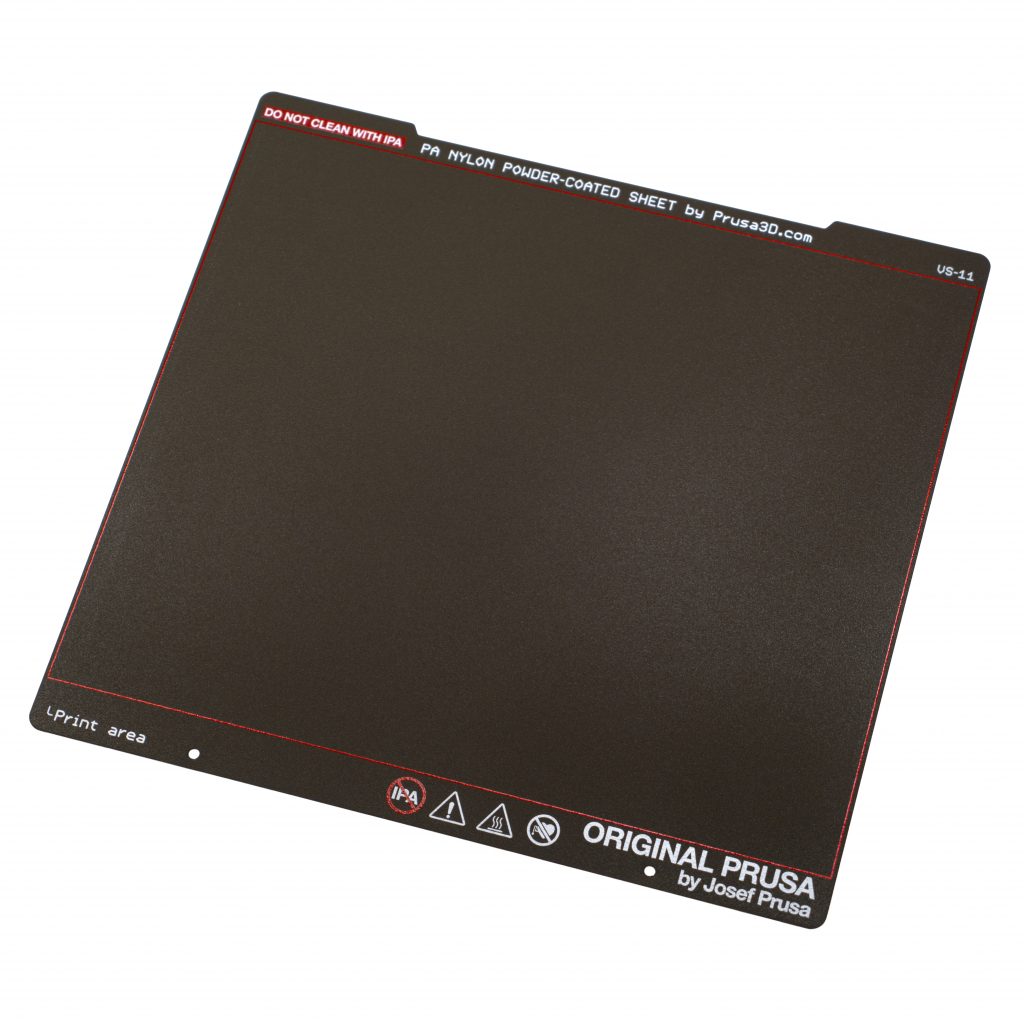
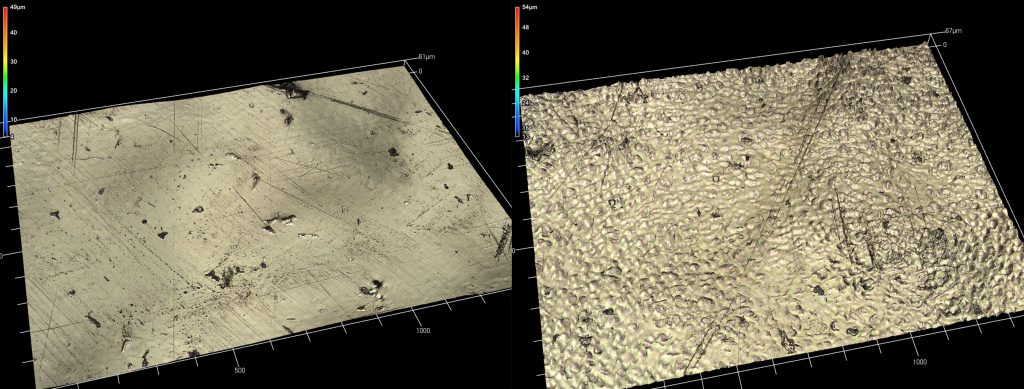
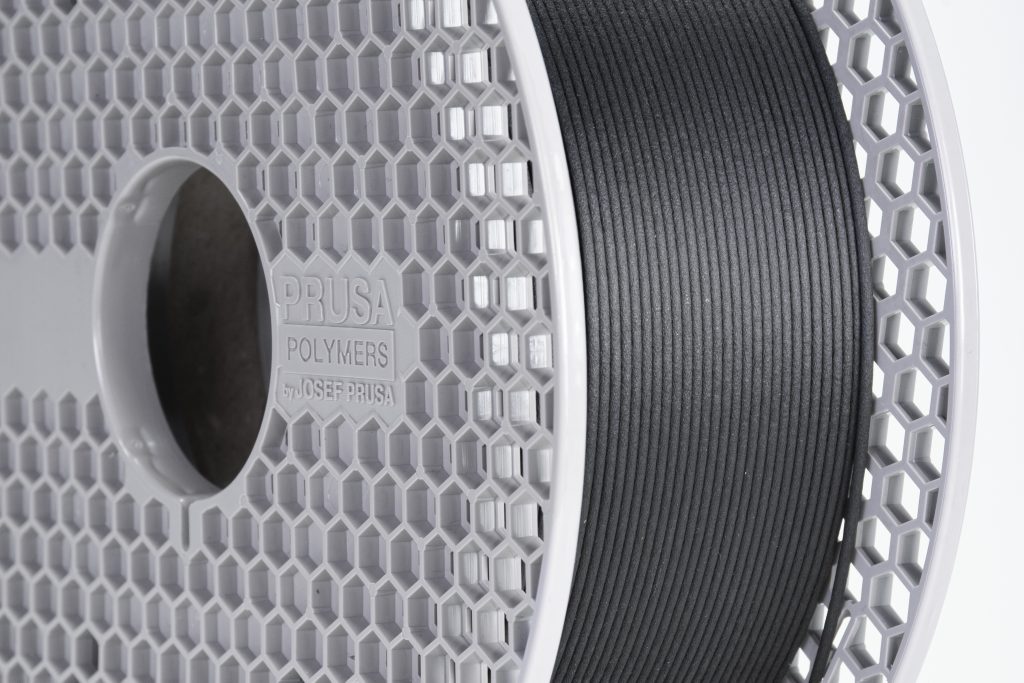
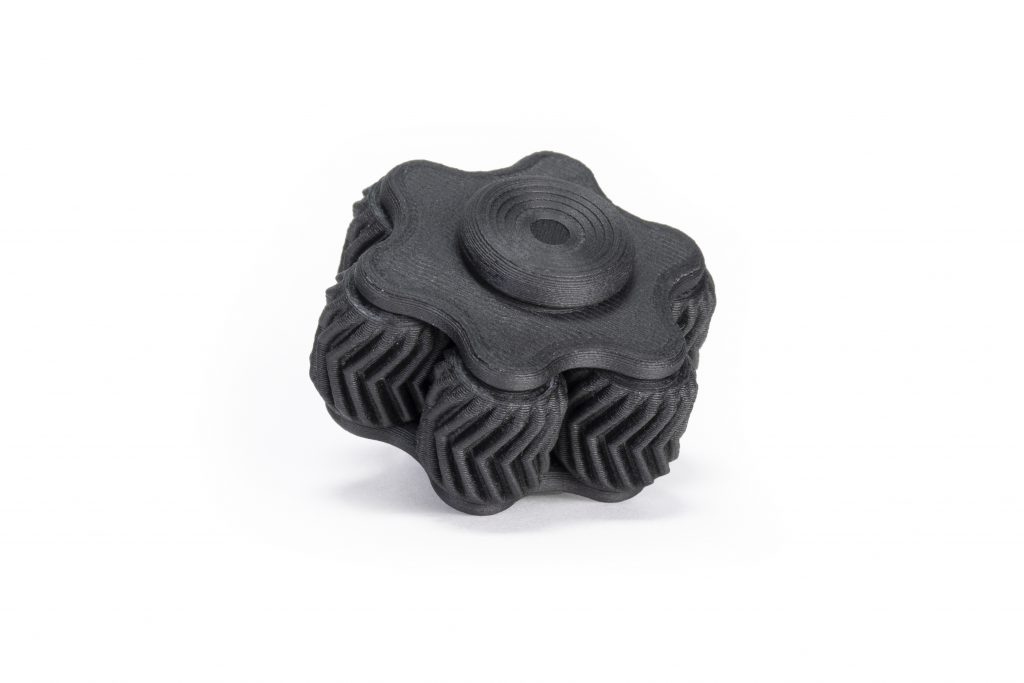
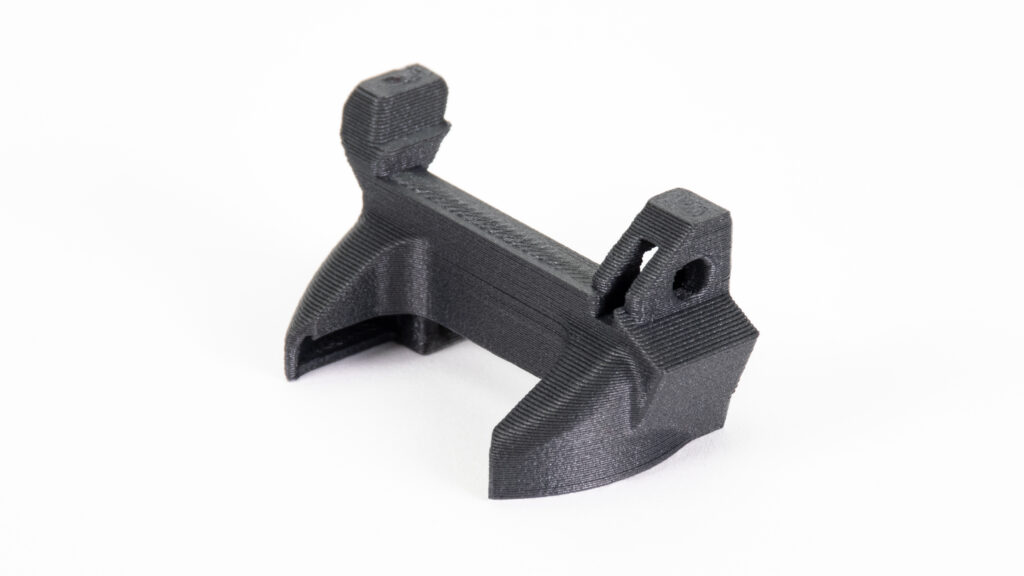


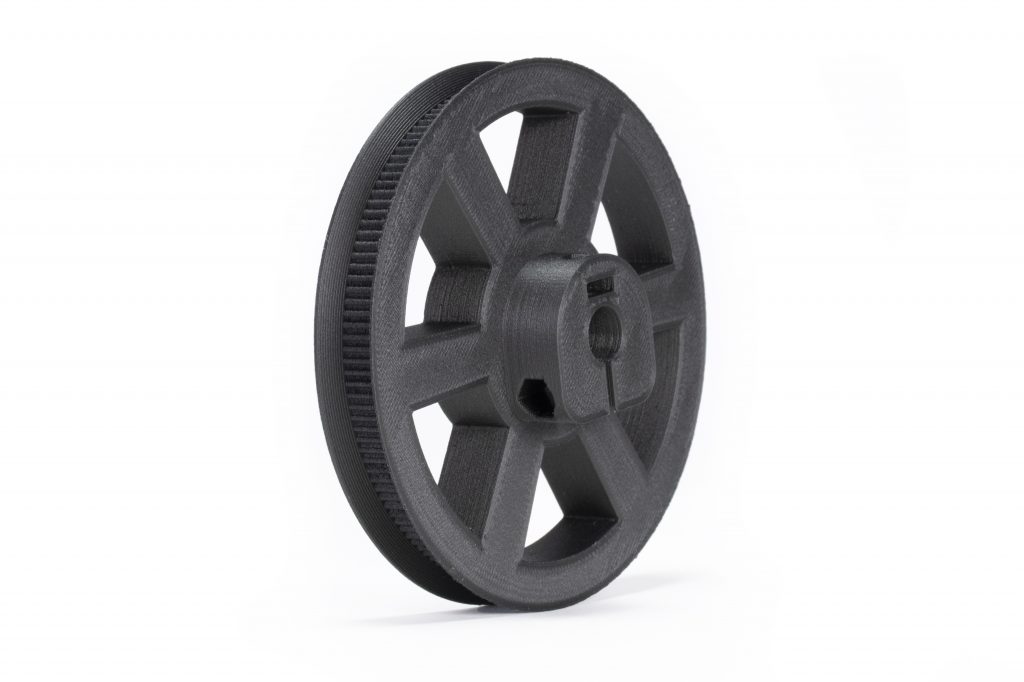
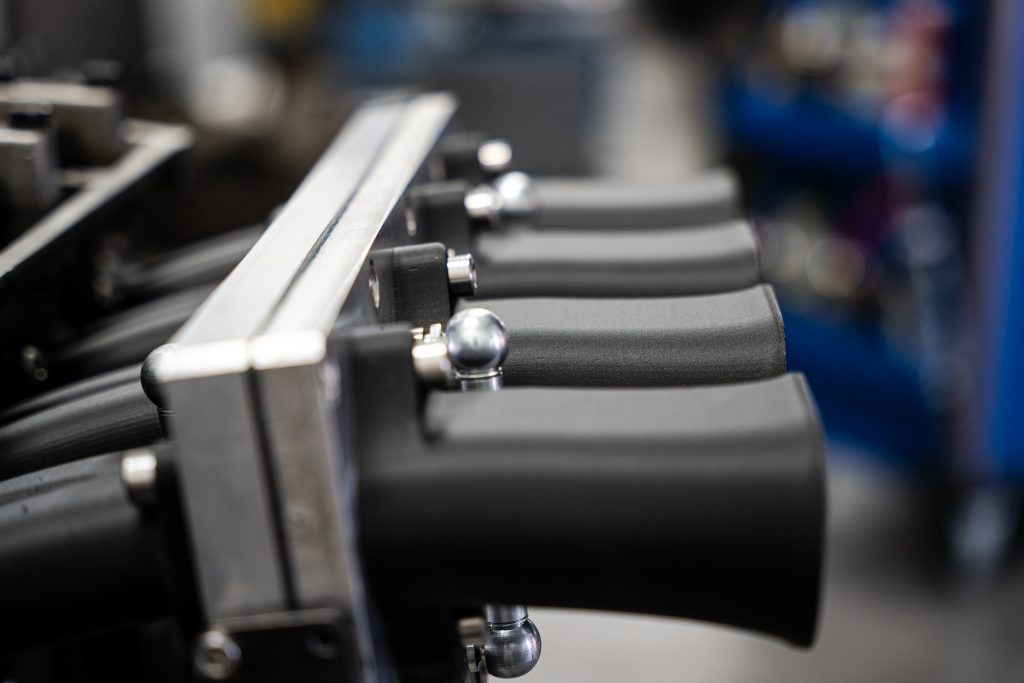
Awesome! Although too high a price for printing larp armor—this is a fantastic new material. Really surprised about the low-friction aspect—I would have thought with the CF it would lose that quality.
How is the creep performance?
I would also like to know the creep resistance, especially compared to PC Blend and PC Blend Carbon Fiber.
How long can it be stored in sealed package until printing quality suffers noticeably?
Question seconded. This is important information to work out what to stock and how much drying time to budget.
Hello, we haven’t measured this but it should be OK for several months before unpacking the filament. Anyway, as we said in the article, the occasional drying is necessary. About the drying times – it’s 4-6 hours at 90 °C.
Might a slightly relaxed perfect wind improve drying time? Clearly the roll would be bigger, but if it’s 800g, I guess there’s space available anyway?
Hello, there is not a noticeable difference. 4-6 hours at 90 °C is the golden number for any type of winding and weight of PA11CF.
That sheet has got me excited, I can’t wait to try it out… the PACF I use a lot will stick fine most of the time but occasionally will just release itself mid print, and with the price of the filament it kills me a bit every time. I can’t wait to try the filament too… technical parts printed in PACF are just gorgeous. Put me down for a bundle… or two :p
As carbon fiber particles are abrasive by itself (like “sandpaper”) wouldn’t two gears printed both in PA11CF wear out each other?
The MK4 printer could also be cited in the above text, alongside the MK3S+ and XL printers